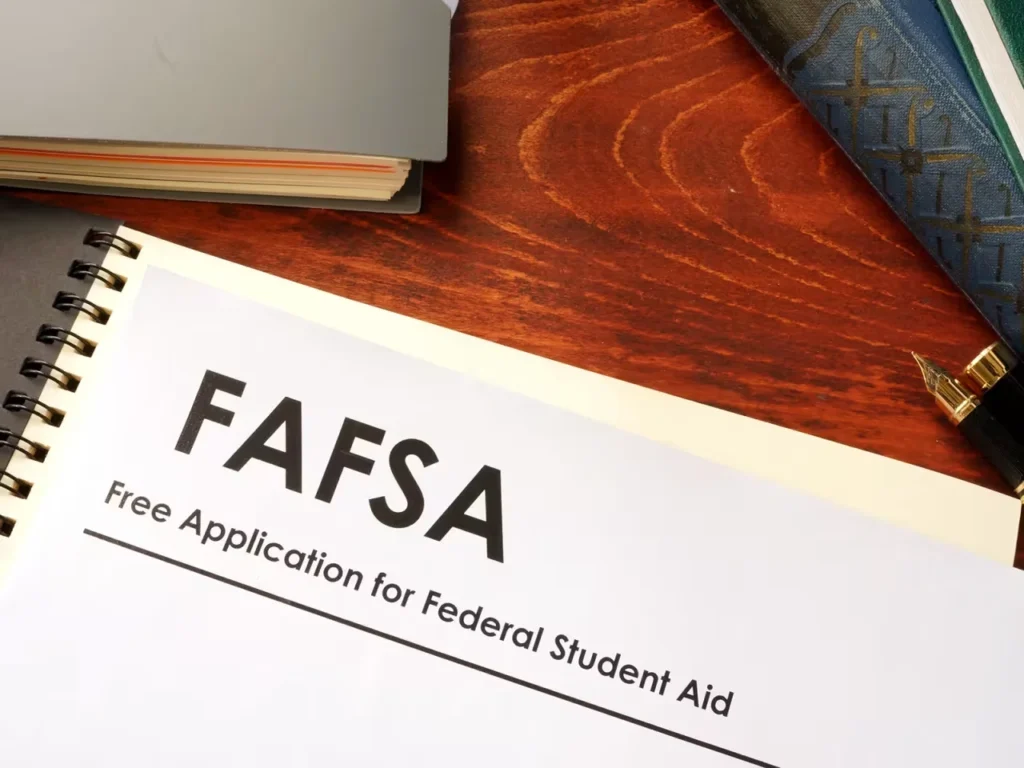FAFSA does not cover all tuition for most students. It determines eligibility for federal grants, loans, and work study programs that help offset the cost of attending college, but it rarely pays the full amount.
The total aid received depends on financial need, school costs, and available funding at each institution.
If you want to understand exactly how much FAFSA can cover based on your financial need and school type, visit our guide on how much FAFSA can cover for detailed breakdowns and examples.
Key Takeaways
- FAFSA rarely covers all tuition; it provides partial funding through grants, loans, and work-study programs.
- Students must renew FAFSA every year to remain eligible for aid, and the total amount awarded depends on financial need, school type, and cost of attendance.
- Federal programs like the Pell Grant and Direct Loans have limits, meaning most families still need savings or additional loans.
- Out-of-state tuition, housing, and personal expenses are often only partially covered.
- Submitting FAFSA early and combining it with scholarships improves college affordability.
At CollegeCommit, we help families understand the realities of paying for college. FAFSA opens access to federal aid, but it rarely covers every cost. Tuition and fees make up only part of the total cost of attending, which also includes housing, meals, and books.
Our advisors guide students through every step – from academic support to college strategy – with care and precision. We don’t just advise – we engineer your student’s admissions edge.
Table of Contents
ToggleHow FAFSA Works for Students
Is FAFSA a Loan or Free Money?
FAFSA is an application used to determine eligibility for grants, federal student loans, and work study programs. Grants are need-based and don’t require repayment, while loans do. Work study programs allow students to earn money through part-time jobs.
For families new to the process, our guide on how to get financial aid for college explains eligibility, forms, and timelines.
What FAFSA Covers – Tuition, Fees, and More
FAFSA connects students to major federal programs, including the Pell Grant, FSEOG, Work-Study, and Direct Loans. Some families also qualify for Parent PLUS Loans. The average Pell Grant covers approximately $7,000 per year, while total loan limits for dependent undergraduate students typically reach $31,000 over the course of four years.
Many families also ask whether the Pell Grant itself counts as financial aid. Learn more about what a Federal Pell Grant is and whether it is the same as financial aid.
Aid can be applied toward tuition, fees, room and board, and books. The school’s financial aid office decides how each student’s financial aid package is distributed.
Sources
Disclosures
- Coverage depends on aid type, calculated need/SAI, school policies, and remaining eligibility within the cost of attendance.
- “Sometimes” indicates an allowable expense under cost of attendance that may not be fully funded in every award package.
- No approximations were used beyond categorical labels (“Yes” or “Sometimes”). Amounts vary by school and student; specific dollar values are n/a.

Does FAFSA Cover All Four Years?
FAFSA must be renewed each school year. Aid amounts can change based on income or school costs. Completing the application annually ensures continued access to federal programs.
To see how long you can remain eligible, review how many years you can get financial aid.
How Much FAFSA and Financial Aid Cover
Can FAFSA or Financial Aid Cover All Tuition?
FAFSA rarely covers full tuition. Only students with exceptional financial need may have all costs covered. Most families receive partial aid and cover the rest through savings, merit awards, or loans.
Do Student Loans Cover All Tuition?
For many families, the question shifts from grants to loans. So, do student loans cover all tuition? Federal student loans can help fill gaps left by FAFSA grants, but they typically don’t cover 100% of total expenses.
Private student loans may extend further, but they often come with higher interest rates and stricter repayment terms. Families should compare options carefully before borrowing beyond what is needed.
What if FAFSA does not cover the full Tuition?
If aid doesn’t meet tuition, contact your school’s financial aid office. Ask about additional scholarships or grants, or appeal if your financial situation has changed.
Why Aid Amounts Vary by School
Aid depends on residency, school type, and tuition. Public universities often charge lower rates for in-state students, while private schools may cost more but offer stronger aid programs. Families should compare both tuition and the total cost of attendance.
Understanding the Student Aid Index (SAI)
The Student Aid Index (SAI) measures a family’s need. It replaces the Expected Family Contribution. A lower SAI means higher eligibility for need-based aid.

What FAFSA Doesn’t Cover
Does FAFSA Cover Room and Board?
FAFSA may include limited funds for housing, but most students use savings or additional funding.
Does FAFSA Cover Out-of-State Tuition?
FAFSA applies to all accredited U.S. colleges, but aid amounts don’t change for out-of-state students. Families must plan for higher tuition independently.
Other Education Costs Not Covered by FAFSA
FAFSA doesn’t automatically cover technology, lab fees, or travel. Always confirm current aid limits on Studentaid.gov or with your school’s financial aid office.
When FAFSA and Aid Fall Short
Do Student Loans Cover Remaining Tuition?
When aid falls short, students often use loans. Federal loans usually have lower interest rates and better repayment terms than private student loans. Families can also consider Parent PLUS Loans.
Can You Request More Aid During the Semester?
Yes. If your financial situation changes, contact your financial aid office to request a reassessment or submit new documentation.
I Can’t Afford College Even With Financial Aid – What to Do
Families facing gaps can explore state grants, local scholarships, or start at a community college before transferring.

What to Do If FAFSA Isn’t Enough
- Review your Student Aid Index (SAI) for accuracy.
- Request an appeal from your financial aid office.
- Explore scholarship databases.
- Compare Parent PLUS, private loans, or payment plans.
Smart Planning for High-Achieving Families
Maximize FAFSA and Merit Aid Early
Submitting FAFSA early increases your chance of receiving the most aid. Pairing FAFSA with academic excellence can lead to merit scholarships, especially at Ivy League and Top 20 institutions. CollegeCommit supports Early Action, Early Decision, and Regular Decision admissions.
Use 529 Plans and Expert Guidance
A 529 plan helps families save tax-free for tuition and fees. At CollegeCommit, our advisors – former admissions officers and Ivy League graduates with over 20 years of experience – help families combine financial planning with admissions goals.
CollegeCommit provides direction and measurable impact. We work 100% remotely, serving students nationwide from 8th grade through 12th grade.
Final Insights for Families
Why Strategy Matters
Starting early helps families align financial aid with admissions goals. Integrating FAFSA strategy with the Common App process and essay prep improves outcomes. The Common App essay has a 650-word limit, and we teach students to express their potential authentically within that space.
When to Speak With an Advisor
At CollegeCommit, families work with a dedicated consultant who coordinates the process and connects students to specialists for essay editing, interview prep, and testing. Students write their own essays, but we mentor and refine their approach.
Ready to transform uncertainty into opportunity? Join our upcoming cohort at CollegeCommit: Where Preparation Becomes Placement.
Schedule your free private consultation today
Quick FAFSA Questions Answered
Can FAFSA Cover Out-of-State Tuition?
FAFSA applies to accredited U.S. colleges, but it doesn’t increase based on tuition level.
What If My Aid Package Changes Midyear?
Aid may shift if income or enrollment status changes. Notify your financial aid office to request a reassessment.
Does FAFSA Cover All Classes Each Semester?
Yes, if the courses count toward a degree and meet federal eligibility. Dropping below half-time can affect aid.
.


